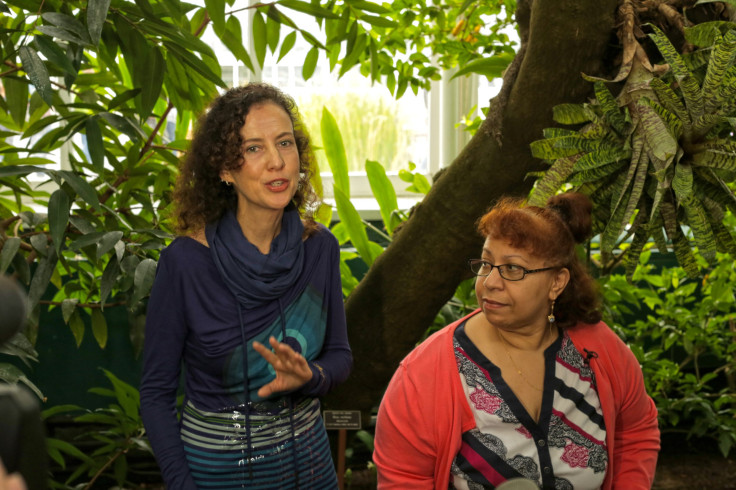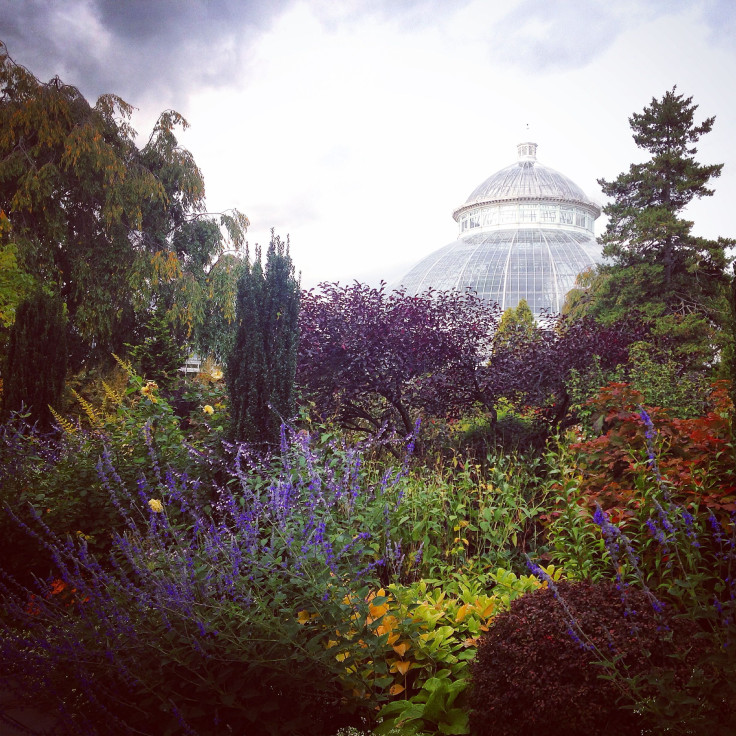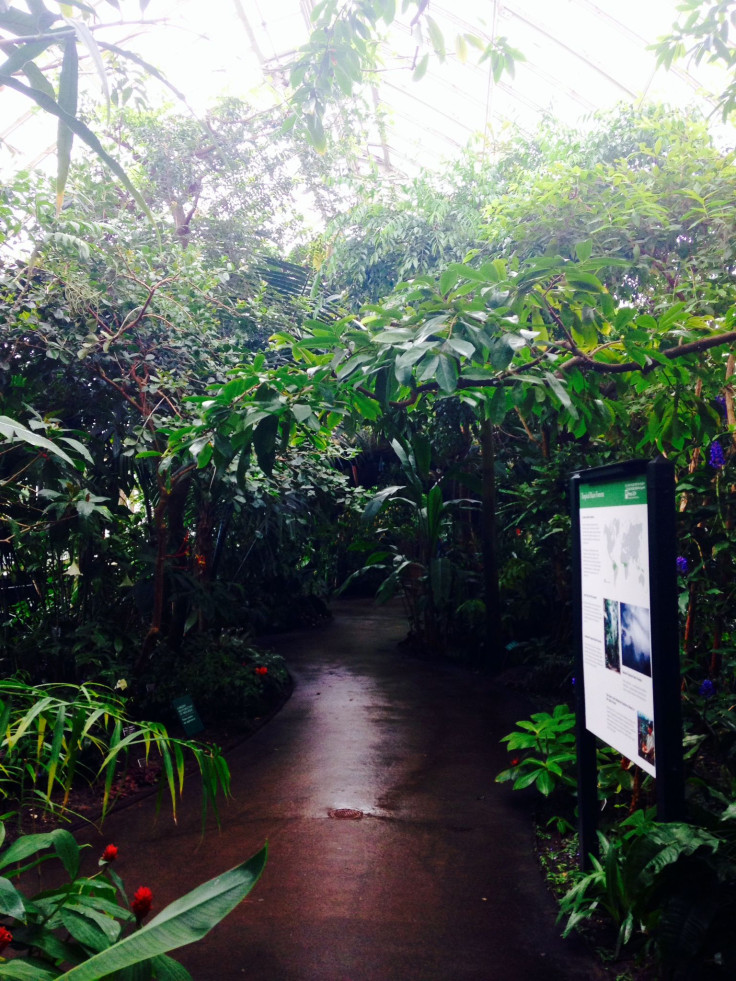Urban Ethnobotany Research Earns Cigna Grant, In Efforts To Treat Diabetes, Infertility, And Asthma

On the New York Botanical Garden’s 250-acre property sits a greenhouse conservatory that doubles as a medicine cabinet. It is one of the world’s largest and most reputably exceptional centers for studying plants at all levels, from its DNA to its medicinal uses, and the Cigna Foundation has just awarded their $100,000 World of Difference grant to study New York City’s immigrant Latino and Caribbean communities and their plant holistic approach to medicine.
The New York Botanical Garden reached out to Cigna after reading about its World of Difference grant guidelines and applied for the highly-competitive funding, which will only be awarded to 15 research pursuits this year. The emerging world of ethnobotany is a unique area of research, and Cigna’s grant will make it possible for the nation’s two leading ethnomedical research specialists Dr. Michael Balick and Dr. Ina Vandebroek to pursue the first urban ethnobotany research project of its kind to connect plant scientists with health care professionals to address health care in urban immigrant communities. Vandebroek, a specialist from the New York Botanical Garden, told Medical Daily, “Ethnobotany is a science as old as the first botanical and scientific inquiries. If we take it as far back into history as the first explorers in South America or the Caribbean, who arrived there and started taking notes, you could say that was the beginning.”

Ethnobotany studies from Vandebroek’s team will pursue to lay a strong foundation, converging traditional remedies passed down through immigrant generations and modern Westernized medicine. By improving the medical and biochemical understanding of medicinal plants, patient satisfaction and adherence is predicted to improve, along with clinical outcomes and the reduction of health disparities.
Dominican patients who have been taking their mother’s advice and treating their rashes with aloe vera should be able to tell their physicians how they’re naturally taking care of it, and the physician should be educated in how effectual it is. Research has been lacking in this area, which is why a blend of holistic understanding needs to be highlighted, especially when treating specific immigrant communities.
“I think that a lot of cultures are continuing their tradition even when biomedical health care becomes more easily accessible for them. They still continue with it,” Vandebroek said. “In these ethnic diverse cities there’s a lot of exchange of information. I think it’s going to become more important than it already is.”
Vandebroek and her team began their work from a grant provided by the National Institutes of Health in 2005, and from there they began to closely study the medicinal uses of certain plants in Dominican culture. Cigna’s grant will allow Vandebroek’s team to pursue other cultures, such as Puerto Ricans, Mexicans, and Jamaicans to compare how each population uses certain plants for specific ailments. In New York City alone, Dominicans know how to use 200 different plants for various health conditions, from the flu to the common cold to diabetes, according to Vandebroek. By unearthing the benefits and adverse effects plants can have on the body, especially when mixed with prescription drugs, the patient-to-physician relationship can become a valuable exchange of culture and medicine.

“I see that the medical community is becoming more and more open toward having this type of dialogue with their patients because they themselves are realizing their patients continue to take herbal remedies. Often they do not follow up on their prescription medicines their provider gives them because their remedies are working better for them.”
Vandebroek’s research aims to bridge the gap between traditional herbal remedies in Latino and Caribbean cultures with Western and allopathic medicines. Currently, she’s working with medical students and physicians in Dominican communities to study how patients are using and cultivating traditional medicines. It will help physicians to understand what patients are supplementing in addition to what they’re already prescribed.
“The learnings flow both ways because these populations come to New York City with their traditional remedies,” Executive Director of the Cigna Foundation David Figliuzzi told Medical Daily. “On the tour today there is a woman who is Dominican and an herbalist in her community. She was describing how she would prescribe, in a matter of speaking, herbal remedies to the members in her community and what they would be used for. What Dr. Vandebroek will do is create a pathway to have that conversation with a physician to really look at everything a patient is doing. It’s about culturally sensitive care.”

The Cigna World of Difference grant money will be allocated to support Vandebroek’s work by funding a mix of staff, research, and communications development. By integrating ethnobotany with medicine, treatments to ailments can be improved and bolstered. Figliuzzi said health equity is one of their main priorities and delivering optimal health outcomes for Latinos and Caribbean populations is an area of concern for them. “We want everyone to have an equal chance at achieving their best health,” Figliuzzi said.
Cultures with medicinal plant use deeply ingrained throughout generations, treat illnesses such as diabetes, asthma, and even infertility. The leaves and stems from the spiked spiralflag, for example, are frequently boiled and drunk as a tea to help diabetics. However, overdose could lead to cholera and diuresis, which is why further research is crucial to medicine. Aloe vera is used to treat asthma and bronchitis, if eaten or mixed in a juice or prepared as a tea. It can also soothe wounds or burns when applied topically.
Along the tour, Vandebroek stopped to point out the calabash tree, commonly used in Dominican culture to treat infertility. By drinking small amounts of the fruit’s flesh blended together into an herbal medicine, it has been said to help cleanse a mother-to-be and prepare her for childbirth and also to treat after the baby is born. However, Vandebroek points out that in some cases it's been reported ingesting the actual fruit can lead to toxicity and has been known to cause abortions in cattle. It's exactly why further research is crucial to documenting an classifying uses and precautions.

“People say it cleanses the womb, so this cultural information can be used as a starting point to develop research into the bioactivity in those plant remedies to see if it really helps,” Vandebroek said. “This grant means a lot to our research because it gives us an impetus to continue, and it gives us energy to continue with what we initiated. We’re always talking about traditional medicine as something in the past, something ancient, something indigenous communities far in the rain forest do. But no, it’s something the immigrant communities use here in New York City and continue to do.”
Published by Medicaldaily.com



























